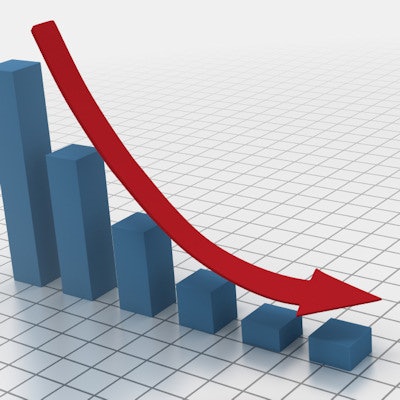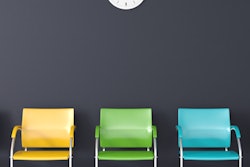
Before COVID-19, the dental industry was expected to have one of its best years, with projected dental spending tagged at $150 billion. Now, spending is projected to be about one-third of the initial estimate: $52 billion.
"To say it's devastating the industry is a massive understatement," said Steve Thorne, CEO of Pacific Dental Services, during a recent panel discussion hosted by the ADA's Health Policy Institute (HPI).
The pandemic has been a free-for-all for many industries, including dental. With little to no coordinated U.S. response to the emergency, each state dictated its own rules and deadlines, creating anxiety, fear, and confusion. Dental organizations looked for guidance from governors, national agencies, and others, often leaving dentists just to figure it out, as Colorado's Andrew Bagley, DDS, recently told us.
Much like states, dental practices maneuvered as best as they could. Some closed and remain closed. Some stayed open to emergency dental patients, and a few continued working like business as usual. Some hoarded personal protective equipment (PPE), while others donated theirs to healthcare workers.
Though some states have allowed dentists to begin reopening, no one is sure how long they will remain open. PPE shortages and other challenges, such as employees unwilling to return for fear of exposure or having no one to watch their children while schools remain closed, continue to add to mounting uncertainties.
HPI's panel discussion couldn't provide many concrete answers, but it did estimate the pandemic's economic impact.
Marko Vujicic, PhD, chief economist and vice president of HPI, reminded its approximately 1,600 attendees that the data provided are based on plenty of assumptions. These include when the curve is considered officially flattened nationwide, whether there is a second COVID-19 wave, when all states will reopen and recommend dental practices get back to routine care, patient attitudes, insurance coverage, and income.
"Things are changing week by week," Vujicic said. "From our perspective, don't take this as gospel. We're all probably going to revise these estimates in a month as we go."
A bit of a consensus
What many seem to agree on is that things are going to be rough for the near future.
Dental care spending in the U.S. may decline by up to 66% in 2020 and 32% in 2021, according to HPI's projections. Though it modeled alternative scenarios that would have a more muted effect, Vujicic said HPI believes this is the most likely scenario for the industry.
Under this scenario, projected total dental spending would be $49.6 billion in 2020 and recover by about 80% to $104.3 billion in 2021, he said.
Ty Hamilton, of P&R Dental Strategies, offered up a grim view of the second quarter of 2020.
"If the essential-only services hold through the way of Q2, which is the end of June, we are projecting an 80% drop in utilization and, in just Q2, more than $40 billion in lost revenues," Hamilton said. "That's the punchline."
Joanne Fontana, a consulting actuary at Milliman, estimated that the decrease in the demand for dental service may be anywhere between 27% and 52%. She based her projections on how dental practices were affected during the Great Recession. Though officials contend that the recession started in late 2007 and ended in the summer of 2009, many industries never made it completely back.
"From 2007 to 2010, it took a while for [dental] services to move up," Fontana said. "It never quite got up [to where it had been.]"
Demand correlates with the health of the economy. If patients lose jobs and their employer-based insurance, then that will affect whether they visit their dentists.
"This is still speculative," Fontana said. "We don't know how long this will last. We're not sure of the economic downturn."
More bad news
More importantly, early data had projected that more people in the U.S. were going to have commercial dental insurance, Hamilton said.
"We were really tracking an increase year over year. 2020 was going to be more than 2019," she said.
Not only is that unlikely to come true now, she expects many offices to shutter sooner.
She said her company has tracked corporate expansions over the years. Based on economic impact and the fact that 40% of practices have primary dentists who are older than 60, she believes it will speed up closures.
"Aging workforce combined with economic pressures may, in fact, accelerate some of the changes we were already anticipating with merging, consolidation, different ownership structures," Hamilton said.
A bright side
Data shared by Steve Beuchaw, director of life and medical device research at Wolfe Research, offered a more optimistic scenario.
Consumer-level data collected in late April from 132 respondents from different regions in the U.S. and varied income levels showed that most patients don't expect to go to the dentist fewer times in 2020 than they did in 2019, he said.
Aggregate numbers showed "no meaningful changes" in their dental routines except for those who live on the East Coast, which has had some of the largest numbers of COVID-19 cases and deaths.
Overall, patients expected to visit their dentists the same number of times in 2020 as they did in 2019. However, very few patients in Connecticut, Massachusetts, Maine, Pennsylvania, New Jersey, and New York said they expected to visit dentists within the next 90 days, Beuchaw noted.
"This shows that these people think there isn't going to be any meaningful change to their economic situation or coverage situation and tells you who are worried about safety," he said.
The future
The short-term isn't pretty, but Thorne believes things will bounce back despite the many unresolved issues and changes in real-time.
"It was an elevator ride down where they cut the cable, and it will be a slow escalator ride up," Thorne said.




















